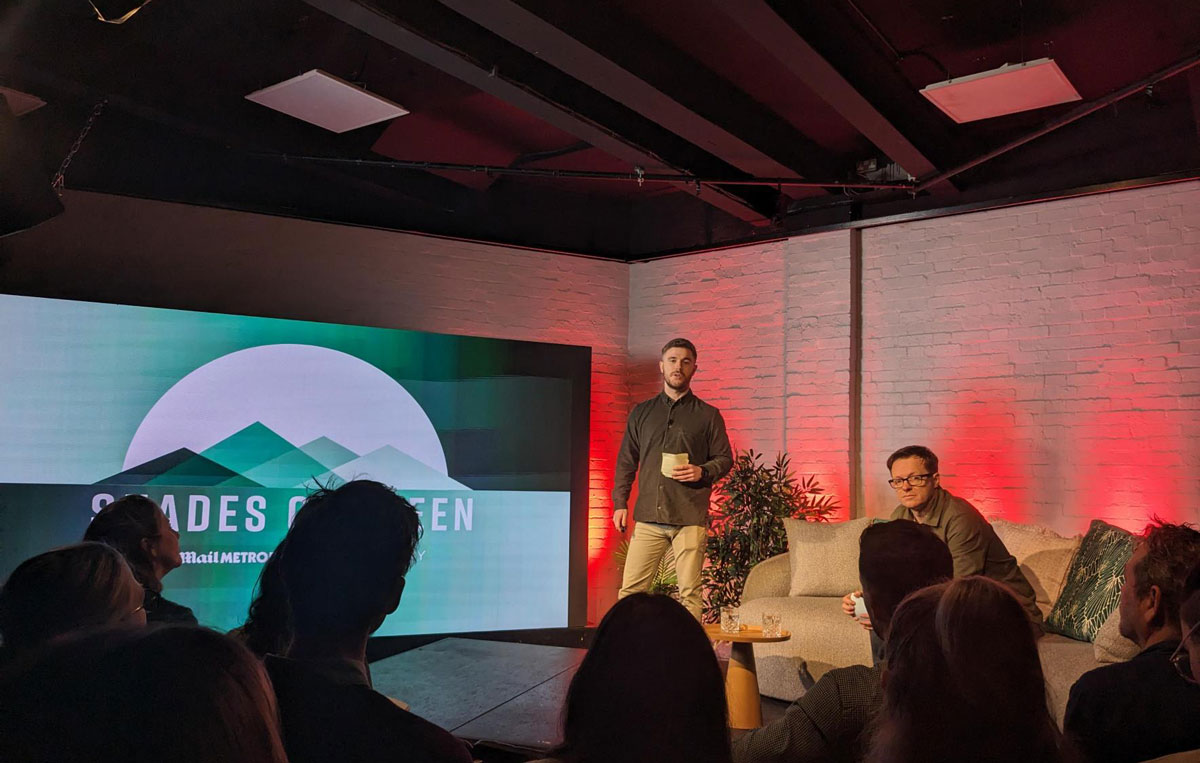With scepticism and confusion around climate messaging common among consumers despite ever-growing environmental concern, Mail Metro Media’s latest ‘Shades of Green’ research urges brands to help readers make eco-conscious decisions through clearer communications
Presented at a Wednesday breakfast briefing at The Drum Labs in London’s Shoreditch, the publisher’s insight team demonstrated the pressing need for advertisers to present a more accessible approach for those less likely to consider the environment in purchase decisions but are still concerned about the climate.
The research found only 3% of Brits believe climate change does not exist. However, while the UK public are concerned about the environment, this concern does not manifest itself equally.
The findings show people exist on a ‘shades of green’ continuum, comprised of ‘dark greens’ (7% of climate-conscious Brits — those who often factor the environment into their purchase decisions), ‘nuanced greens’ (40% — those who sometimes factor it in) and light greens (54% — those who occasionally do). While the proportion of dark greens does not vary per generation, younger generations are more likely to consider themselves ‘nuanced’.
What is more, environment may be a pressing long-term concern but when it comes to short-term worries, it is outranked 10 to one by the cost of the living. Many believe that eco-friendly products equal higher prices and lower quality and think that the onus of sustainability should be on brands rather than individuals to make the biggest difference.
Another obstacle is that while the concern is widespread, the understanding around industry terms such as ‘net zero’ or ‘B Corp’ is not, with only one in 10 able to define ‘net zero’ to someone else. However, with trusted media sources such as news brands (66% of Brits) relied upon to drive understanding of environmental issues, opportunities exist for brands to harness this narrative power to change the conversation around sustainable living.
Speaking beyond core ‘dark greens’
After the presentation, The Drum’s Jenni Baker spoke to a panel of industry leaders about how brands can harness the research’s findings to encourage more ‘nuanced green’ consumers to make more sustainable choices without scrimping on either quality or cost.
Ensuring that brands speak to audiences outside of the perceived core ‘dark green’ niche of younger, more socially conscious consumers was particularly paramount, commented Wavemaker head of strategy Monica Majumdar. “Older generations… speak with their pounds”, she said. “There is an audience ripe for action but it’s guiding them… we could make potentially bigger changes if we speak to that older audience.”
Ryan Uhl, chief brand strategy officer at Mail Metro Media, agreed, arguing that it was unlikely the industry could ever truly convince the entire population to become ‘dark greens’. However, it was incumbent on brands to speak about sustainable choices through the shorter term concerns of their consumers.
He said: “There will be lots of people on lower incomes who are worried about their bank balance and energy bills.” If brands changed their communications strategies to address how a more sustainable choice could be both better quality and lighter on their wallets through greater longevity, “you get everyone to take that little step forward.”
Emphasising the findings from the research, New Scientist staff writer Graham Lawton urged brands to take the initiative: “Hammer home to clients that consumers expect businesses to solve this problem… businesses can solve the problem by doing the right thing.”

